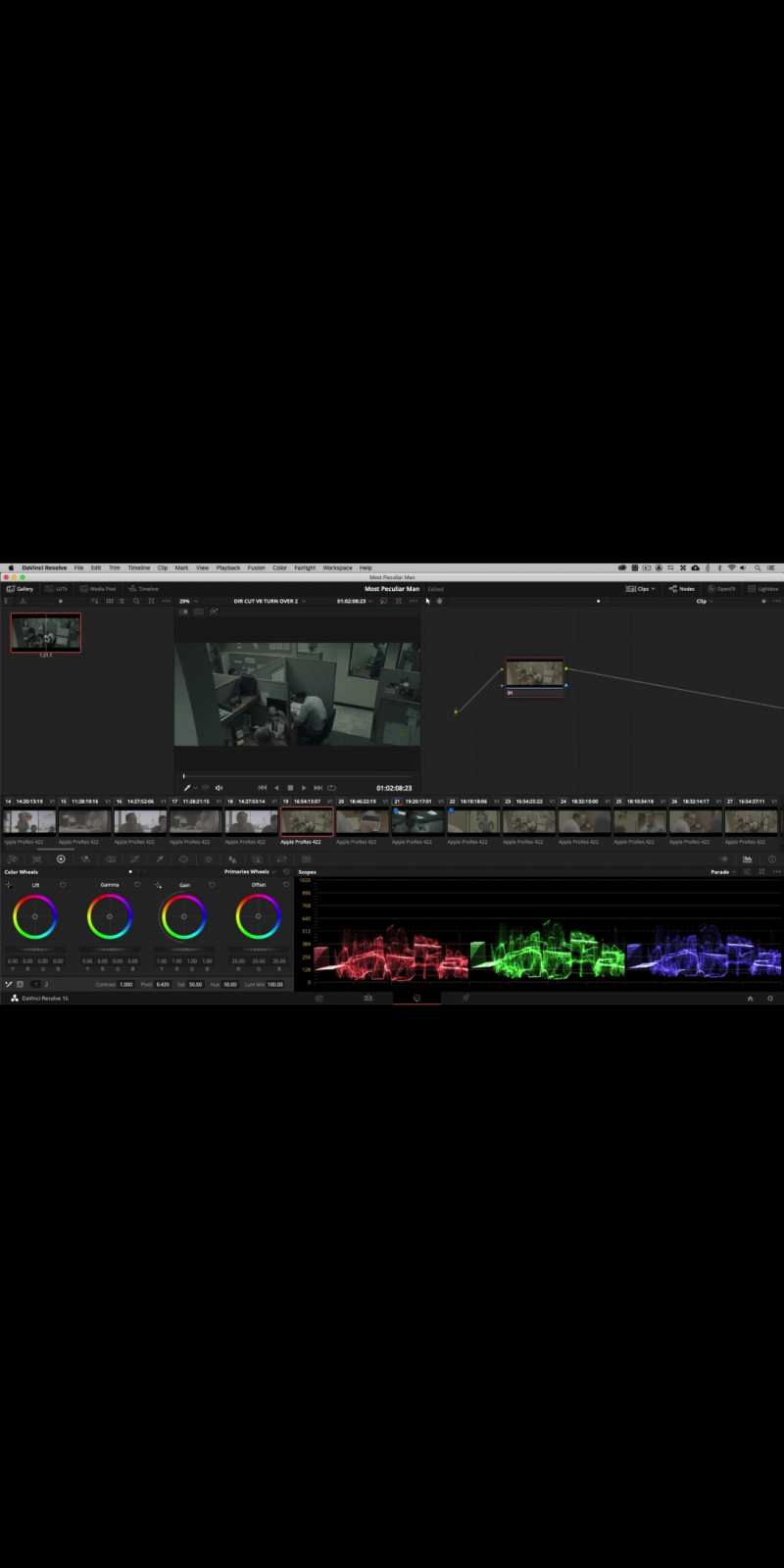-
Posts
438 -
Joined
-
Last visited
Content Type
Profiles
Case studies - Free
Case studies - Premium
Resources
Insider
Courses
Forums
Store
Posts posted by Tom Evans
-
-
Do you know if it exists any wireless audio systems that works with the DaVinci Resolve?
-
Thanks, think I will go for the last Ultrastudio as it was way more affordable. How do you adjust the audio coming out of Resolve? I used to have a JBL Nano Patch Plus, but there might be other alternatives now?
-
I'm buying an iMac Pro to run DaVinci Resolve and Premiere Pro. How do I get the video signal and audio out to my monitor when I can't insert a decklink card?
-
I have a CG318 from Eizo that I took home the other day, but I don't have access to our regular calibration guy this time. As I don't have a clue about how to calibrate, I tried the internal Eizo auto-calibration, set the gamma to 2.4, brightness to 100 and viewing space to rec709. I have a trained eye after working with color for more than twenty eyes and can see that it looks wrong. I know the internal calibration only is supposed to take you 95% there but it looks totally off. For some reason it looks more correct when I switch from rec709 to DCI. Can someone please enlight me why this is happening?
-
I'm considering buying or renting one of the Boris FX products, but not sure if it will be good value for money to pay more for a new license than going for an annual subscription. On a general basis, would you own a software today when computer tech are going forward in this pace. Will it be outdated in a year or two anyways? Thoughts?
-
I want to to create a black letterbox on the sides of a clip, but blanking on the input sizing is greyed out. Why is it?
-
Looks like you need to do some frame by frame work, this isn't complicated in Fusion but it's time consuming work. Or your could consider covering a larger area with a plate or see if you could get away with keying the dust parts and changing its color and luma levels.
-
Hi Andrea,
In a printer lights workflow the LUT represents the film stock and should be at the very end of your node stack. That way every correction will run through the curve of the LUT. Experiment with using different LUTs such as the Kodaks and Fujis coming with Resolve as those mimic the original film stocks. By pushing exposure and colors through the LUT you will see that the image will be affected more in the mids and less in the blacks and whites. I suggest you watch the professional color grading course here on Lowepost for some examples of this workflow and you might also read the printer light article in the Insider section for a better understanding.-
 3
3
-
-
The course will answer these questions, it's a large topic and you need that basic understanding to pull this off properly.
-
-
Agree with Amada. Looks like rather hard offset adjustments + saturation through a curve with rather flat ends so that mainly the mids are affected.
-
Can I ask why you don't go to a post house with flame/Nuke artists of you want to pull of complicated stabilizations? Baselight is a colorist tool and it's highly unavailable for the regular man on the street. Over the top expensive and hard to learn for doing a single shot once in a while.
-
Now that Flame included Lustre, I'm tempted to go that way. Pricey though, but you can't beat that finishing package.
-
 1
1
-
-
The motion algorithms are different on all applications so for lipsync you need to test which interpolation is the closest to what is created in FCPX.
Translation data such as position, scale should transfer well, but you need to tick the scaling button when importing the XML in Resolve.
-
You can right click the root folder and choose to import all the clips in both the main folders and subfolders.
-
 1
1
-
-
We have an Avid project that needs to be moved over to Premiere? What will be the fastest way to do this?
-
It will not solve the issue, just tell them it doesn't match and they will make it match.
-
 2
2
-
-
When you switch between the interpolation alternatives in Avid, you will see a slight difference as it generates some offset values in how the motion appears on the screen. You can also choose between a couple of interpolation alternatives in Resolve so my bet is that the slight differences you describe is cased by this.
-
2 minutes ago, Bruno Mansi said:
I do find that if you overlay a reference file of the cut from Avid, there's some very slight differences in timewarp effects when translated in Resolve. Nothing that cannot be fixed by adjusting the curves, but it seems to be there when the motion becomes more complicated in nature.
It depends on the choice of frame interpolation of the re-timing process as the algorithms are different.
-
Conform timelines from Avid using AAF and you will be fine, they will transfer over. When you hear people shouting about timewarps not transferring correctly it's because they think EDL's can transfer timewarp information or because they are conforming timelines from Premiere (with AAF or XML).
-
 1
1
-
-
Do you want to learn how to do speedwarps in Resolve or how to conform a timeline with speedwarps delivered from an editor? That's two very different things.
-
Strangely, I woke up the 10th and nothing did change in my life. How about yours @Ilia Ivanov?
-
 1
1
-
-
Do you guys have any idea about how to disable the built in ARRI LUT after enabling it?
-
Ah, should have figured out myself. Thank you Lee!
-
 1
1
-



Subtractive Contrast look and CMY Color
in DaVinci Resolve
Use a film emulations LUT to get the rich contrast. Then, key the blacks and work the lift and gamma against each other to open up the shadows. That leaves the richness in the mids and gives milky blacks.